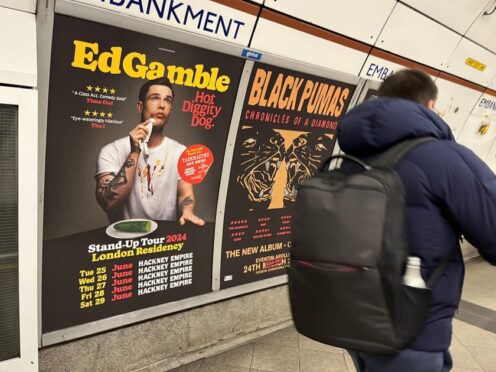Comedian Ed Gamble has been forced to remove a picture of a hot dog from posters promoting his stand-up tour on the Tube network after it breached Transport for London’s advertising policy.
The Off Menu podcast host was pictured with the fast-food item in an advert for his upcoming show Hot Diggity Dog.
But when the billboards were sent to TfL for display on the Underground, Gamble was told to alter the poster because it failed to comply with the organisation’s advertising policy on featuring foods high in fat, sugar and salt.
The comedian instead swapped the hot dog for a cucumber to get the promotional material on display.
Gamble said: “I actually don’t have a problem with the TfL regulations, they make sense to me. But the new posters promote something way more harmful – the idea that cucumbers pair well with ketchup and mustard. I’m not sad to have to remove the hot dog, it was only featured on the poster because I wanted to eat during the photoshoot.
“Hopefully it’s not too late to change the title of the show to Cu Diggity Cucumber?”
In a post on Instagram, he described the incident as a “career highlight” and added: “TfL told me I couldn’t have a hot dog on my poster to promote my @hackneyempire shows in June. I guess I’m dangerous? So I’ve replaced it with a cucumber. Eat your greens, Kids!”
A spokesperson for TfL said: “We welcome all advertising on our network that complies with our published guidance.
“Following a review of the advert, we advised that elements would need to be removed or obscured to ensure it complied with our policy.
“A revised advert is now running on the network and we are always happy to work with people to ensure adverts follow our policy.”
The ban on junk food advertising across London’s public transport network came into force in 2019.
Regulations forbid posters for food and drink high in fat, salt and sugar on the Underground and Overground, as well as buses and bus shelters.
London Mayor Sadiq Khan said the rules would help tackle child obesity rates in the capital.
TfL’s policy requires all companies to provide the nutritional information of items featured in their adverts. The organisation uses a model developed by the Food Standards Agency (FSA) to define foods high in fat, sugar and salt.
